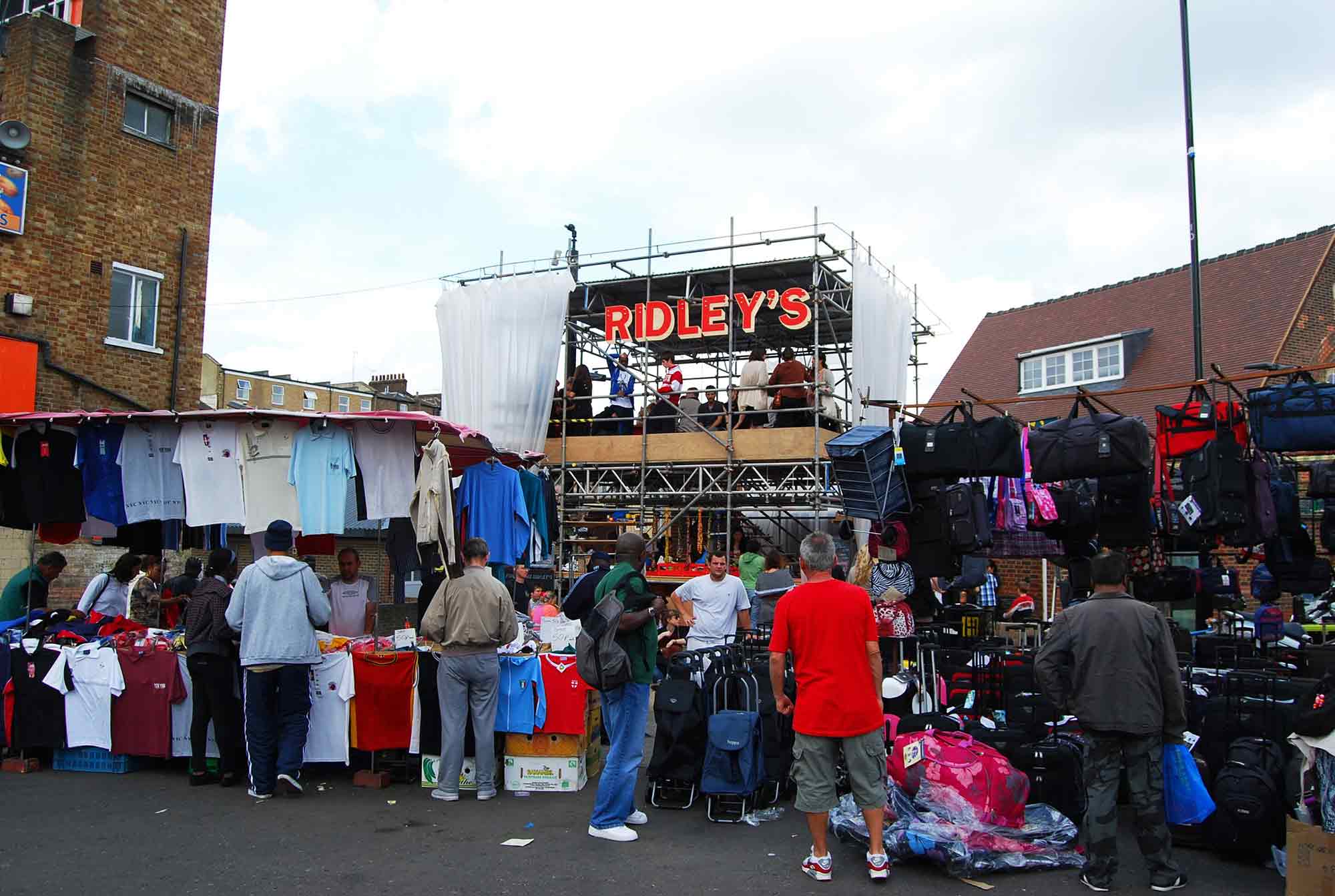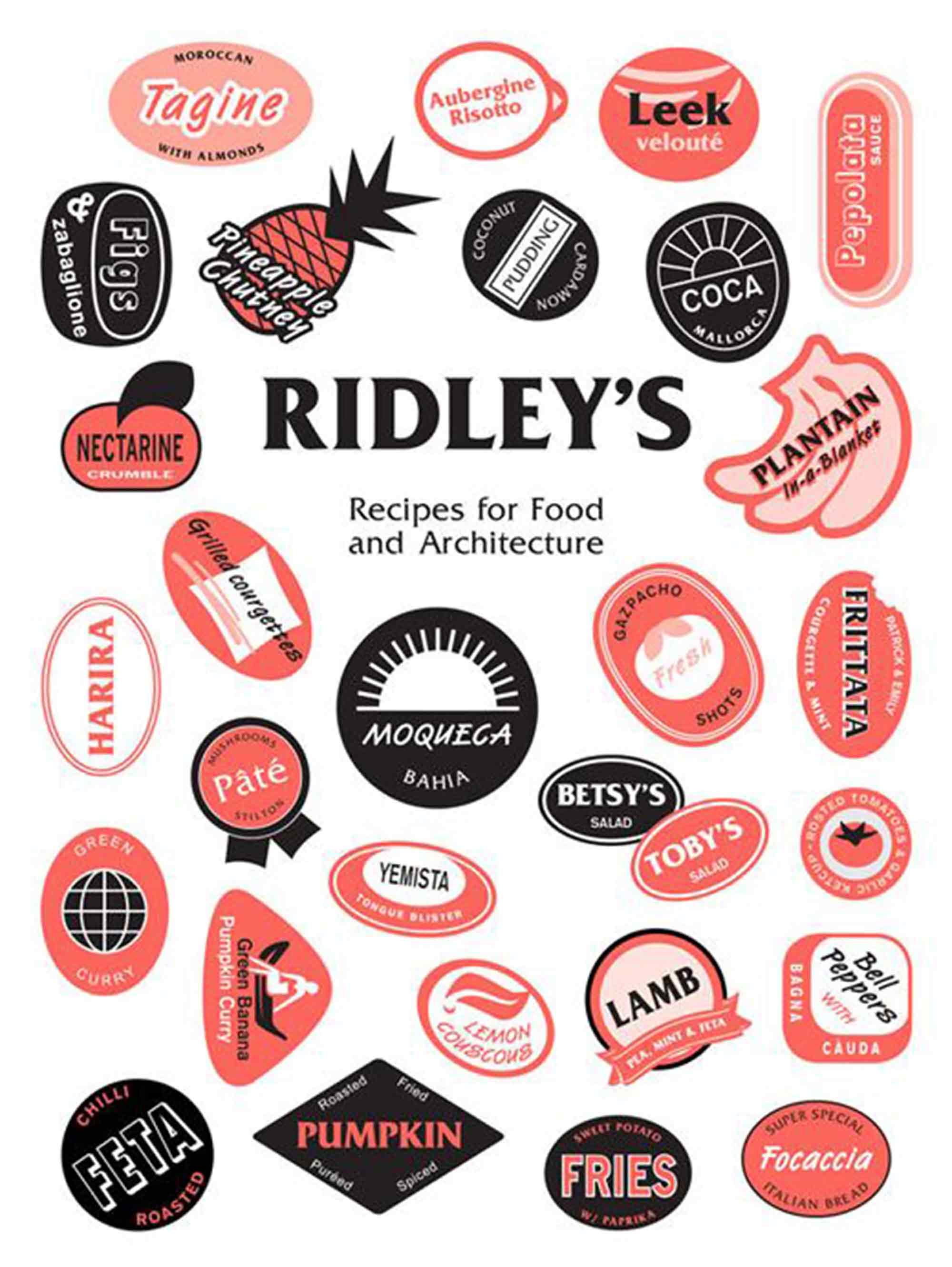- Login
Critical Spatial Practice


Ridley’s was a public realm intervention that combined food and architecture, featuring a food-for-food exchange system. This collaborative project destabilized the traditional format of the restaurant where the boundaries between “designer”, “producer” and “consumer” tore apart to give way to new roles: everyone was a maker, a fundamental cog of the food system.
Creating its own alternative economy, Ridley’s demonstrated that architecture can be more than a commodity, socially engaged and influential. By expanding its tools and modes of practice and borrowing from the procedures of informal and spontaneous exchange systems.
Visitors to the restaurant became part of a cycle. £3’s worth of market produce from our shopping list could be exchanged for the dish of the day at lunch or £15 provided an evening meal, with diners getting back a £5 food shopping voucher for use at the market. The produce collected at lunch was used to cook dinner, the money made at dinner was used to get ingredients for the following day’s lunch, and the voucher given with the dinner brought people back to the market long after the intervention was over. Ridley’s was a self-sufficient restaurant, co-existing with the market, the traders and its neighbours.
A line-up of local chefs created daily menus using market produce only. Diners sat at a communal table high above the market. Meals prepared in the ground floor kitchen, the hub of exchange and production, were raised by a mechanical table up to the guests above. This scenographic journey emphasised the vertical transformation of the raw food at market level to the cooked meals at the elevated podium above. The temporary summer installation was an opportunity to imagine an alternative socio-economic programme for the public realm.
www.ridleys.org
Key collaborators:
Carpentry by Sam Trice
Identity and graphic design by Guglielmo Rossi
Thanks to the photographers: Dosfotos, Rachel Ferriman, Jessie Levene.
The Decorators is an interdisciplinary design collective founded by Suzanne O’Connell, Carolina Caicedo, Xavi Llarch Font and Mariana Pestana in 2011. With backgrounds in landscape architecture, spatial design, curation and psychology, they work on spatial design projects and cultural programmes that aim to reconnect the physical elements of a place with its social dimension. The Decorators’ projects can be read as the testing of possible infrastructures for communal life, designing programmes and physical elements for a space that turns an individual into a collective. In particular they have produced tables, seating configurations and frameworks for collective eating. For The Decorators, the act of eating is a political act. Commensality – eating and drinking together – is a fundamental social activity, which creates and cements relationships, but which can also defy dominant power structures.
Ridley’s was open to the public for three weeks, with an intricate programme of events organised in collaboration with other people. The building of the structure of the restaurant was collaborative, with simple construction techniques requiring little construction knowledge. Inserted in a public space, Ridley’s was a critical spatial project because it critiqued standardized strategies for market renovation while imagining and enacting an alternative possibility. It put forward an exchange system that was hopeful of creating social change, performing non-monetary exchanges of goods and affect, while at the same time stimulating trade in an economically deprived context.
Gordon Matta Clark and Caroline Goodden, Food (1972).



































































